BBC Climate & Data teams
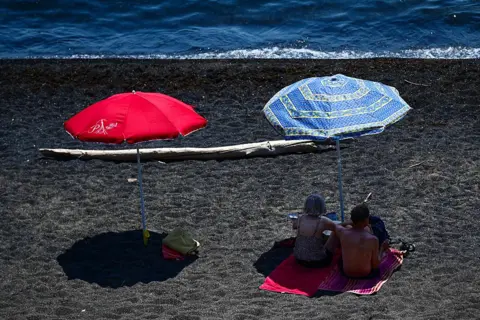 Getty Images
Getty ImagesWarmer water at the seaside might sound nice for your holiday dip, but recent ocean heat in the Mediterranean Sea has been so intense that scientists fear potentially devastating consequences for marine life.
The temperature of the sea surface regularly passed 30C off the coast of Majorca and elsewhere in late June and early July, in places six or seven degrees above usual.
That’s probably warmer than your local leisure centre swimming pool.
It has been the western Med’s most extreme marine heatwave ever recorded for the time of year, affecting large areas of the sea for weeks on end.
The heat appears to be cooling off, but some species simply struggle to cope with such prolonged and intense warmth, with potential knock-on effects for fish stocks.
To give you some idea of these temperatures, most leisure centre swimming pools are heated to roughly 28C. Competitive swimming pools are slightly cooler at 25-28C, World Aquatics says.
Children’s pools are a bit warmer, recommended at 29-31C or 30-32C for babies, according to the Swimming Teachers’ Association.
Such balmy temperatures might sound attractive, but they can pose hidden threats. Harmful bacteria and algae can often spread more easily in warmer seawater, which isn’t treated with cleaning chemicals like your local pool.
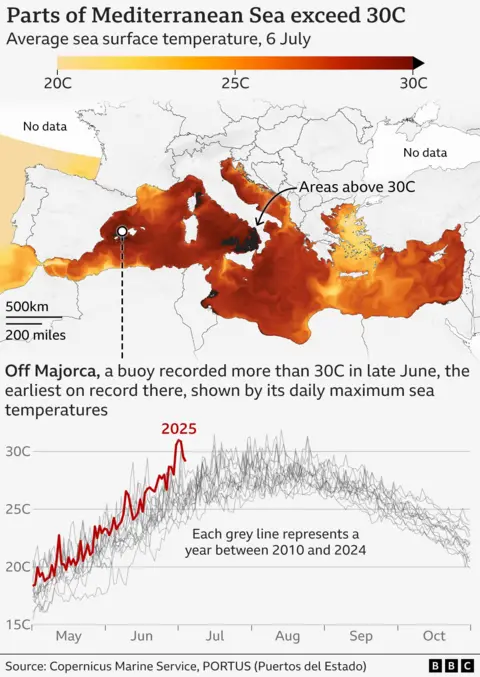
Sea temperatures of 30C or above are not unprecedented in the Med in late summer.
But they are highly unusual for June, according to data from the European Copernicus climate service, Mercator Ocean International, and measurements at Spanish ports.
“What is different this year is that 30C sea temperatures have arrived much earlier, and that means that we can expect the summer to be more intense and longer,” said Marta Marcos, associate professor at the University of the Balearic Islands in Spain.
“I grew up here, so we are used to heatwaves, but this has become more and more common and intense.”
“We’re all very, very surprised at the magnitude of this heatwave,” added Aida Alvera-Azcárate, an oceanographer at the University of Liege in Belgium.
“It’s a matter of high concern, but this is something we can expect to be happening again in the future.”
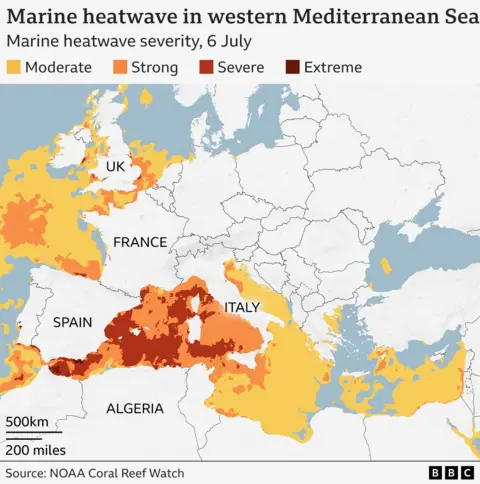
Marine heatwaves are becoming more intense and longer-lasting as humanity continues to release planet-warming gases into our atmosphere, principally by burning coal, oil and gas.
In fact, the number of days of extreme sea surface heat globally has tripled over the past 80 years, according to research published earlier this year.
“Global warming is the main driver of marine heat waves… it’s essentially transferring heat from the atmosphere to the ocean. It’s very simple,” said Dr Marcos.
The Mediterranean is particularly vulnerable because it’s a bit like a bathtub, largely surrounded by continents rather than open ocean.
That means water cannot escape easily, so its surface heats up quickly in the presence of warm air, sunny skies and light winds – as happened in June.
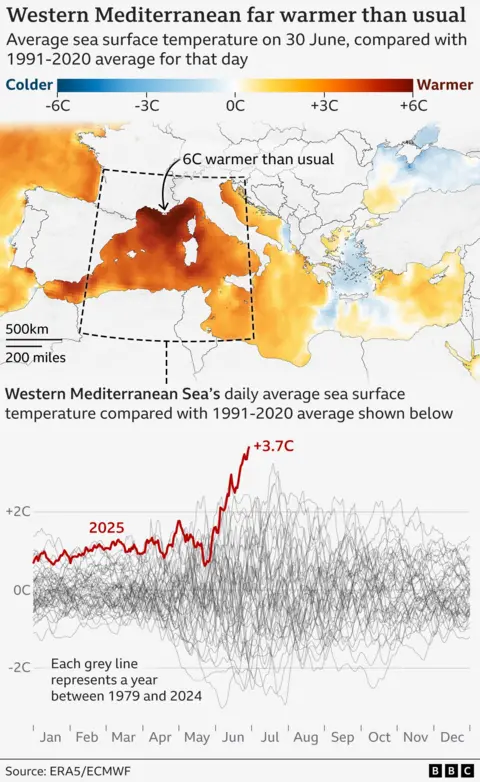
For that reason, the Med is “a climate change hotspot” said Karina von Schuckmann of Mercator Ocean International, a non-profit research organisation.
The heat peaked as June turned to July, after which stronger winds allowed deeper, cooler waters to mix with the warm surface above and bring temperatures down.
But temperatures remain above average and there could be consequences for marine life that we don’t yet know about.
Most life has a temperature threshold beyond which it can’t survive, though it varies a lot between species and individuals.
But sea creatures can also suffer from prolonged heat exposure, which essentially drains their energy through the summer to a point where they can no longer cope.
“I remember four years ago diving in September at the end of summer, we found skeletons of many, many, many populations,” said Emma Cebrian, an ecologist at the Centre for Advanced Studies of Blanes in Spain.
Seaweeds and seagrasses act a bit like the forests of the Mediterranean Sea, home to hundreds of species, as well as locking up planet-warming carbon dioxide.
“Some of them are well adapted to typical Mediterranean warm temperatures, but actually they often cannot withstand marine heatwave conditions, which are becoming more extreme and widespread,” said Dr Cebrian.
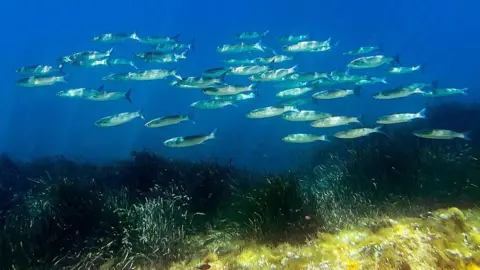 Getty Images
Getty ImagesThe heat can also cause what ecologists call “sub-lethal effects”, where species essentially go into survival mode and don’t reproduce.
“If we start to see ecological impacts, there will almost certainly be impacts on human societies [including] losses of fisheries,” warned Dan Smale, senior research fellow at the Marine Biological Association in Plymouth.
“We’ll have to wait and see, really, but because the temperatures are so high this early in the summer, it is really alarming.”
The fast-warming Med is “a canary in the coal mine for climate change and marine ecosystems,” he added.
Excessive ocean heat can also supercharge extreme weather.
Warmer seas mean extra evaporation, adding to the moisture in the atmosphere that can fuel extreme rainfall.
If other conditions are right, that can lead to devastating flooding, as happened in Libya in 2023 and Valencia in 2024.
 EPA
EPAAnd warmer waters can reduce the cooling effect that coastal populations would usually get from the sea breeze.
That could make things very uncomfortable if there’s another heatwave later in the summer, Dr Marcos warned.
“I’m pretty sure that’s going to be horrible.”










